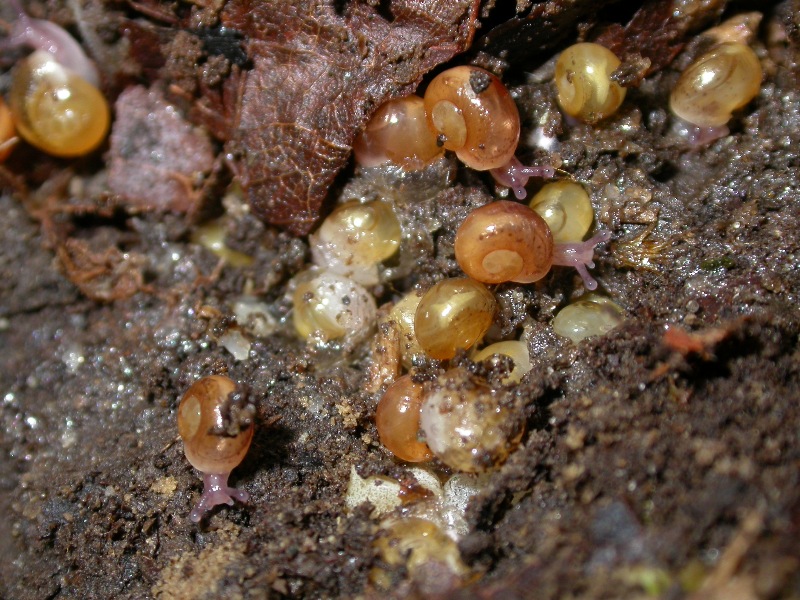
Reproduction
When it comes to reproduction Allogona townsendiana is hermaphroditic, meaning that it has both male and female sex organs and it is known to lay eggs (Reproduction, 2011). Due to the fact that some snails are hermaphroditic they are known to reproduce by cross-fertilization and some snails even have the ability to self-fertilize (Barker, 2001). However, self-fertilization can result in a decrease in diversity and fitness in the offspring in comparison to mated pairs (Barker, 2001). Self-fertilization is typically utilized when the population density is small and it is not likely the snail will find a mate.
Mating for Allogona townsendiana appeared to be highest during the months of March and April, however it could begin as early as February. Meanwhile nesting occurs during April and May (Steensma, 2009). During the mating period relatively large groups of snails would congregate and proceed to select a mate. One mating was witnessed to last up to three hours and forty five minutes (Steensma, 2009). Most terrestrial snails mate at random, however in some species they select a mate based on color, size, and banding pattern (Wolda 1963, cited in Barker 2001). Egg sites vary depending on the species, some will lay their eggs in crevices or holes, while others will bury them beneath moss, leaf debris, wood, or stones (Barker, 2001).
The fertilized eggs are laid after each has received a layer of
albumen, which supplies nutrients to the developing egg, as well as
a protective coating (Barker,
2001). It was observed that the average size of the clutch was
around thirty four eggs. Around the sixty three day mark the eggs
began to hatch and within a matter of hours most of the new
hatchlings had left the area (Steensma,
2009). In many cases once the offspring hatch they will consume
their own eggshell which can provide them with much needed nutrients
and it has been known that those that hatch first will eat their
un-hatched siblings (Barker,
2001). Reproductive patterns play a large role in the way A.
townsendiana interacts with its own as well as other species.
